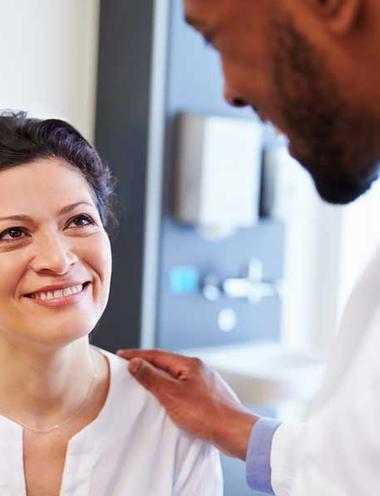Breast Cancer
Breast Cancer
Coral Gables Hospital offers patients access to comprehensive and coordinated breast health, education, diagnostics, and treatment services.
Contact Us
3100 Douglas Rd
Coral Gables, FL 33134
305-445-8461
Mammograms at Coral Gables Hospital
Mammography is the most effective form of early detection for breast cancer. Comprehensive breast cancer screening services include digital diagnostic mammography and Myriad genetic testing for breast cancer.
Breast Care Services
- Breast biopsy
- Breast ultrasound
- Mammography
Mammogram and breast examination guidelines:
- Ages 20-40: perform a breast self-examination every month and have a breast exam by a physician every three years
- Ages 30-35 with strong family history of breast cancer: get a mammogram
- 35 and over: get a baseline mammogram for later comparison
- 40 and over: perform a breast self-examination every month, and have both a breast exam by a physician and a mammography every year
What are the symptoms of breast cancer?
- During your self-exam, look/feel for:
- A lump or thickening in the breast
- A change in breast shape
- Discharge from the nipple
- Skin changes (color, texture, consistency)
- Puckering or dimpling
- Nipple inversion (pulling inward)
Who’s most at risk for breast cancer?
Because breast cancer is the most common type of cancer in women, every woman should consider herself at risk. However, the following factors put you at higher risk for breast cancer:
- 50+ years old
- Previous diagnosis or benign breast disease
- Family history of breast cancer
- No full-term pregnancies
- First pregnancy after 30
- Early menstruation (before 13)
- Late menopause (after 52)
- High-fat diet
- Obesity

